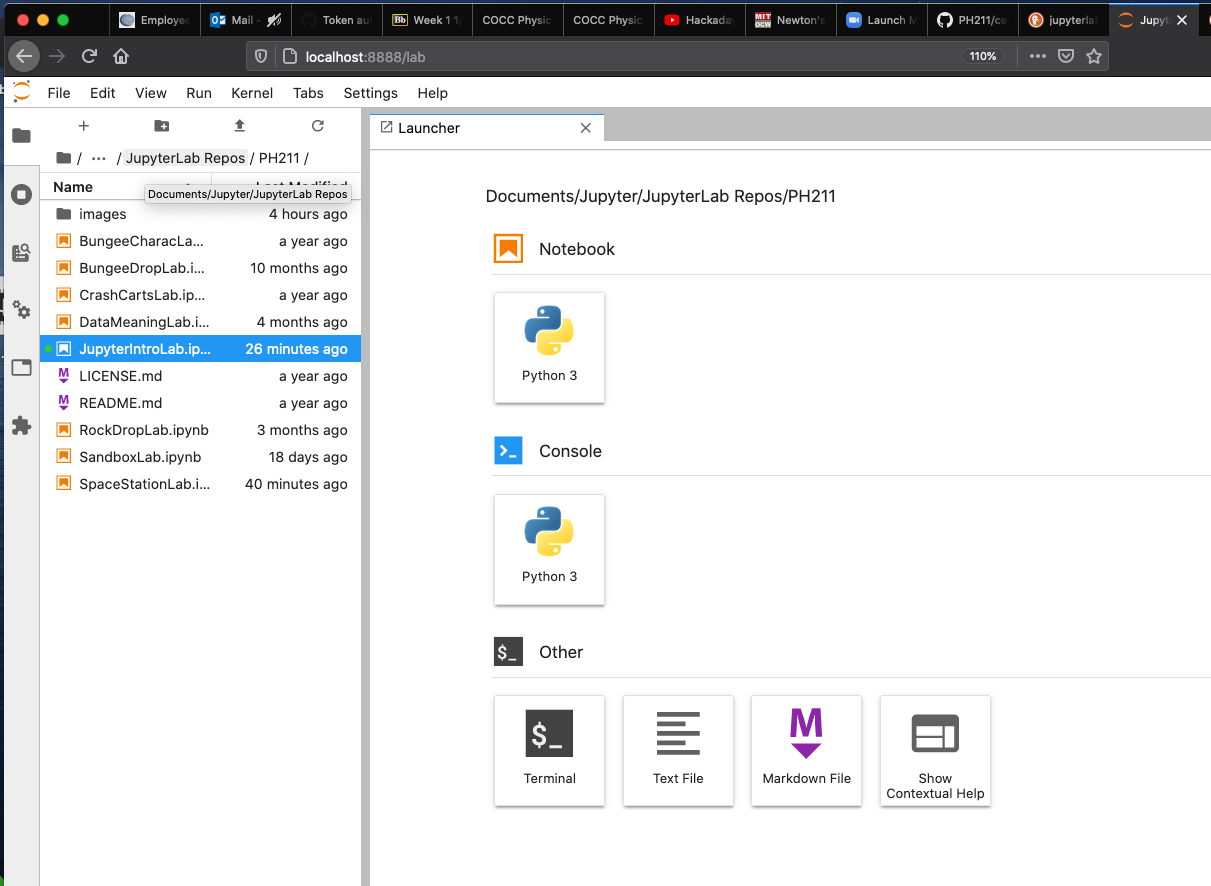Purpose:
Most labs this term will require you to plot data, superimpose physics models on that data, and present your descriptions and analysis in an industry standard form. We need to be sure you are able to open and use these tools ASAP. This lab walks you through the basics of creating a lab in a jupyter notebook by using markdown to format basic written content, using markdown to produce well rendered mathematical expressions, and doing basic mathematical operations with pyuthon and numpy. At the end you will then convert the .ipynb notebook file to a pdf so it can be turned in to the LMS (Bb).
If you haven't already done so go to the Software Resource page and follow the directions for installing Anaconda which includes Jupyterlab and the necessary python code packages.
The references that you might need to accomplish the tasks for this lab are in the JupyterIntroLab notebook that you can download from the PH211 Github Repository. In general you should expect to go to this repo for each lab to download the python notebooks you need. To download an individual notebook from the repo follow the directions on this Github Tools page.
Procedure:
Go to the PH211 Software Resource page and establish some plan for how you are going to have access to the JupyterLab software. The recommendation is to install it on your personal computer via Anaconda. If you have a different plan that's fine but get a plan in place and executed so you have access to the software. If you already have coding experience using python notebooks in a different IDE then you are welcome to use what you are comfortable with but you are on your own since my experience is primarily with Jupyterlab.
1) Download the JupyterIntroLab notebook from the repo. Save it someplace sensible on your computer. Make a copy and rename the copy so it's clear that it's yours.
2) Launch Anaconda and when the Navigator window is open launch Jupyterlab. Jupyterlab will be expecting to access your browser to build the environment so be sure your browser is open. I assume that everyone is using Firefox as their browser since it is significantly more compatible with COCC's LMS than other browsers. I have not explored how Jupyterlab may function differently on browsers other than Firefox.
Anaconda Navigator Window:
Jupyterlab Environment:
3) Work your way through the examples and activities in the JupyterIntroLab notebook which will lead you to create some markdown cells, use embedded LaTeX tools to render some mathematics in markdown cells, create code cells and print Hello World, do some basic python math, and finally use the numpy library to access math functions not available in the basic python release.
4) Export your notebook to a pdf file (instructions are linked in the notebook) and turn it in to the LMS.
- LAB Deliverables:
1) The Lab deliverables are embedded in the jupyterlab notebook. Complete and turn in to LMS.


